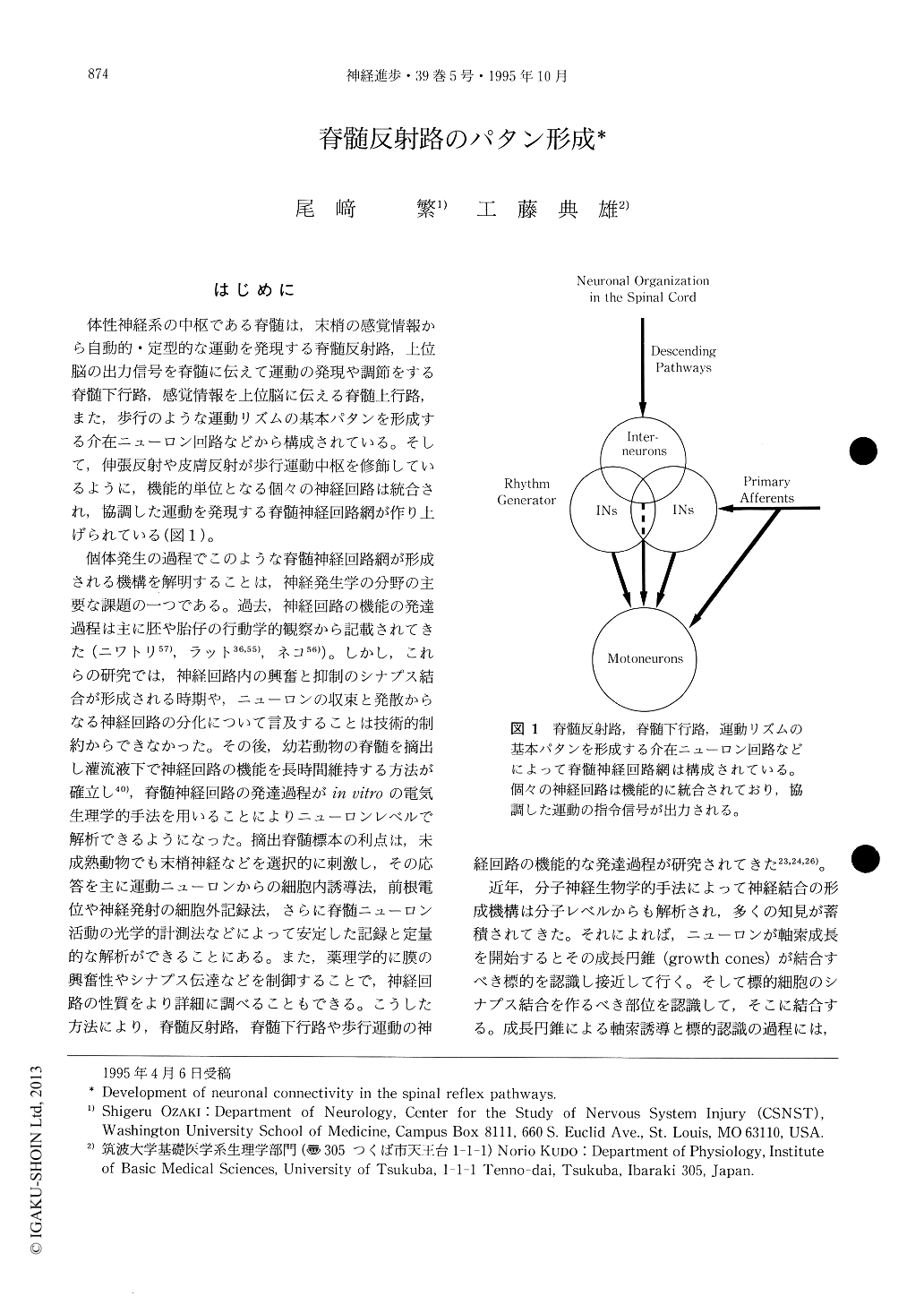Japanese
English
- 有料閲覧
- Abstract 文献概要
- 1ページ目 Look Inside
はじめに
体性神経系の中枢である脊髄は,末梢の感覚情報から自動的・定型的な運動を発現する脊髄反射路,上位脳の出力信号を脊髄に伝えて運動の発現や調節をする脊髄下行路,感覚情報を上位脳に伝える脊髄上行路,また,歩行のような運動リズムの基本パタンを形成する介在ニューロン回路などから構成されている。そして,伸張反射や皮膚反射が歩行運動中枢を修飾しているように,機能的単位となる個々の神経回路は統合され,協調した運動を発現する脊髄神経回路網が作り上げられている(図1)。
個体発生の過程でこのような脊髄神経回路網が形成される機構を解明することは,神経発生学の分野の主要な課題の一つである。過去,神経回路の機能の発達過程は主に胚や胎仔の行動学的観察から記載されてきた(ニワトリ57),ラット36,55),ネコ56))。しかし,これらの研究では,神経回路内の興奮と抑制のシナプス結合が形成される時期や,ニューロンの収束と発散からなる神経回路の分化について言及することは技術的制約からできなかった。
Over the past years, numerous studies have been performed in an effort to understand the mechanisms for generating precise neuronal connections during development. Results of these studies have suggested that the specificity of synaptic connections in developing nervous systems is generated by two broad mechanisms: the initial steps of neuronal growth cone guidance to the target fields which depend on specific molecular cues, and later steps which refine the pattern of synaptic connections in a neural activity-dependent manner.

Copyright © 1995, Igaku-Shoin Ltd. All rights reserved.


